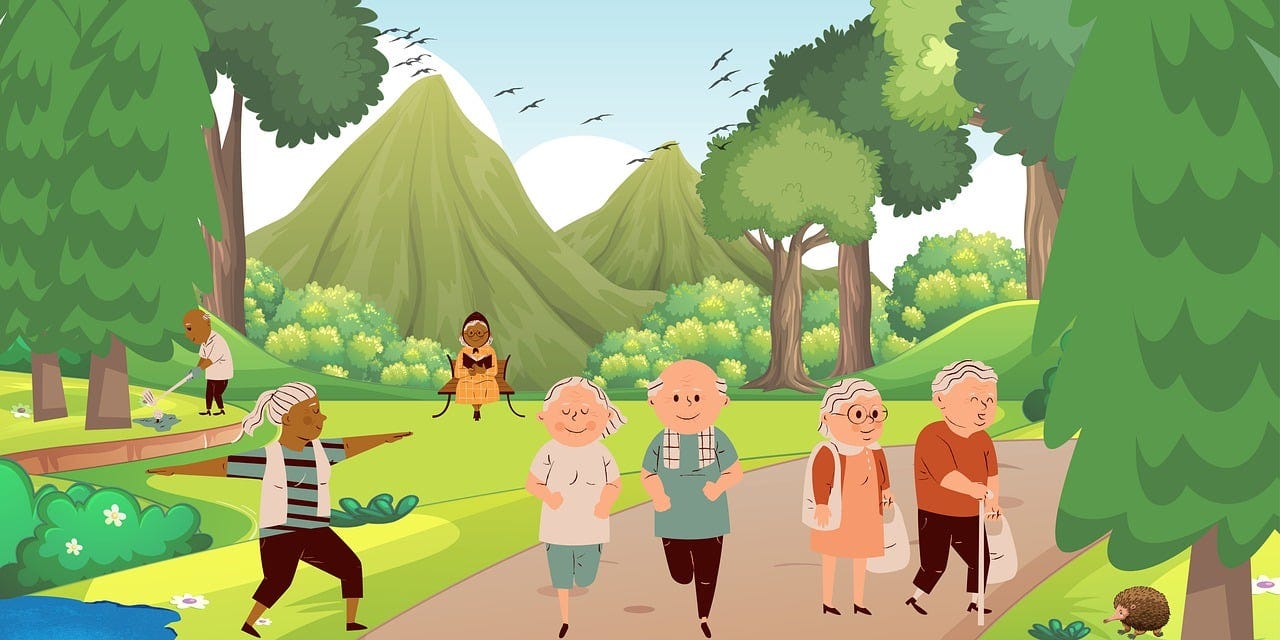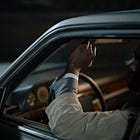A walkable neighborhood is elder care
It's time to admit that modern transportation systems & car dependency are forms of ageism.
From employment opportunities to healthcare access, we hear about stories of ageism. What about transportation systems? Modern American infrastructure confines older adults to automobiles, curtailing their independence and risking their safety.
ageism (noun)
: prejudice or discrimination against a particular age-group and especially the elderly
Example Sentence
The transportation experts demonstrated ageism by recommending intersection expansions that put the elderly at extreme risk of injury and death.
A walkable neighborhood is elder care. I’ve got some resources for people who need a little more than pithy one-liners.
Age-related changes
According to the Centers for Disease Control and Prevention (CDC), the likelihood of sustaining injuries or fatalities in traffic crashes surges with age. Drivers aged 70 and above face higher crash death rates, because even when they don’t cause the crash, they’re most likely to be harmed. It’s obvious that bodies get more frail with age.
When seniors are behind the wheel, age-related changes in vision, physical functioning, and the ability to reason and remember can affect driving abilities. A reduction of strength, coordination, and flexibility, are also significant factors that impact a senior’s ability to safely operate a car.
Medications
About 70% of Americans take at least one prescription drug, and more than 20% take at least five. A staggering 80% of Americans over age 57 are taking at least one prescribed medication.
It’s well documented that some drugs or a combination of drugs impair judgment, or affect reflexes or the alertness necessary for safe driving. This is true even for over-the-counter medicines.
Isolation
Socializing, even casual greetings and eye contact during a morning walk, is preventative health care. The mental health impacts of our surroundings is one of the pillars of my upcoming documentary. Having the ability to be near other humans is incredibly important.
Losing the ability to drive can isolate older adults, leading to poor nutrition, health problems, and depression. But I’m sure we all know the nagging fear of relatives getting hurt because they held onto the keys for one trip too many. Automobile dependency feels like a paradox—seniors need to get places, but all the places require driving or riding in a car.
Autonomy
Our culture seems to have surrendered to this idea that young children and old adults aren’t capable of getting around on their own two feet, and can’t be trusted with independence. Of course there are exceptions, but the rule should be mobility freedom.
It starts with land use. Your local government has rules that dictate where homes, shops, churches, offices, parks, and playgrounds are allowed to be located. And as you might already know, those rules require everything to be spread out so far that driving cars is the only viable way to get around.
There’s exciting momentum for regulatory reform in local and state governments around the country. People are realizing that healthy infrastructure is outlawed in their community, and they’re starting to demand change. It’s maddening to think that in 2023, most of America prohibits senior-friendly neighborhoods where it’s easy to walk or ride a bicycle for short trips.
Speaking of the humble bicycle, I’ll leave you with one last thing…
Older adults can and should ride bikes.
Bicycling is a wonder drug, even when used for casual transportation. The benefits are comparatively large for seniors. If the neighborhoods are designed to allow it, riding a bike (e-bike, e-trike, etc.) promotes good health and is widely accessible.





Andy, great topic. But I want to give a well-deserved kudos... you missed the opportunity to highlight AARP's amazing advocacy in the betterment of this issue. I highly recommend people organizing and networking through AARP's network and reach out to their local AARP liaison. AARP not only often partners in advocacy and lobbying local/state elected officials, they provide audit tools for collecting local data on the specific elements that are supportive to a walkable and bikeable community. These audit tools provide a easy-to-use outline for people to self-organize and aggregate data along the same variables. This allows for aggregating data and empowers small groups of people to share their findings and help their city make data-backed decisions on where the next dollar is spent in their infrastructure improvements.
This is a completely valid point I hadn't really considered explicitly. I think about how Japan in particular treats their elders, and contrast it heavily with what I've seen first hand with my own aging family here.